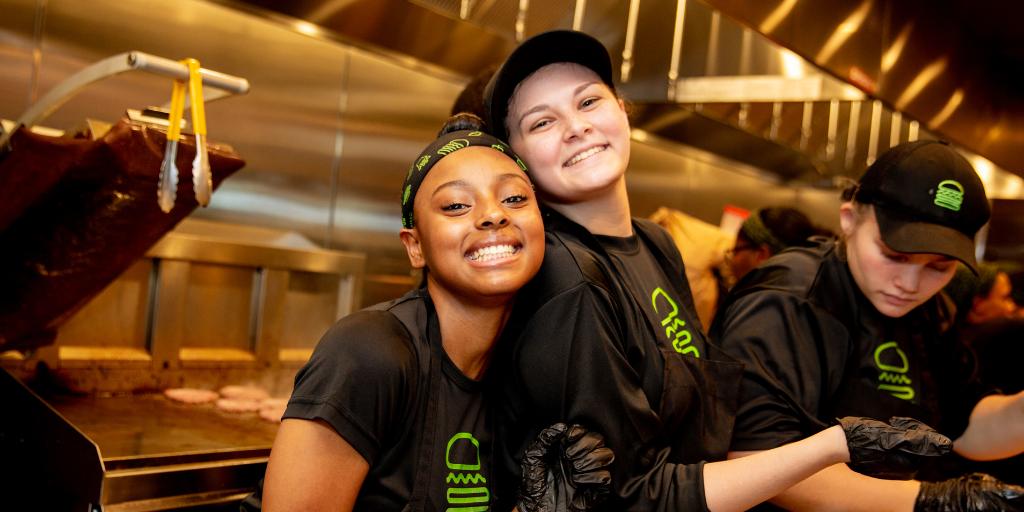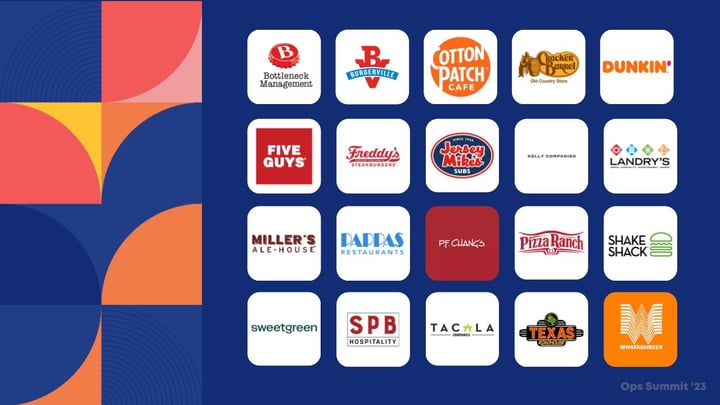
- Home
- Crunchtime Blog
- How Shake Shack Uses 5 Nontraditional KPIs to Control Costs

How Shake Shack Uses 5 Nontraditional KPIs to Control Costs
Shake Shack is a cult favorite with 275+ US locations and a vision to “Stand For Something Good” in all ways, from caring for its team and supporting local communities to sourcing premium ingredients and designing stores responsibly.
With an unwavering dedication to quality and efficiency, Shake Shack keeps operators accountable for targeting a 1.25% inventory variance to control costs. To support these efforts, Shake Shack uses Crunchtime to track unconventional KPIs that complement its waste reporting.

Jared Schenkel, Shake Shack’s Director of Ops Systems & Financials, presented at Crunchtime’s customer conference, Ops Summit 2023, to share how Shake Shack uses each KPI within Crunchtime. Since joining Shake Shack as the General Manager of the first Delaware location in 2016, Jared has been helping teams build simple, effective back-office processes paired with tools that allow operators more time to spend with their team and guests.

In the session, Jared explained some of the unique challenges Shake Shack was experiencing before utilizing Crunchtime. One of these challenges was the restaurant brand’s cumbersome and unsustainable weekly inventory posting process that needed an overhaul. A variance target of 1.25% had been put in place for all inventory items, but with known supply chain issues, most locations were missing the target every single week. Completing the weekly inventory process was complicated and required several manual overrides and interventions. It was clear they needed a better way to identify areas for improvement while still holding operators accountable.
The teams at Crunchtime and Shake Shack worked together closely to develop a new plan to help stores hit their variance targets. They changed the weekly inventory count process into a monthly action plan that only tracked the most important inventory items; food and custard. This instantly made the process more easily repeatable and sustainable, while focusing attention on core inventory items.
When Shake Shack began tracking non-traditional metrics, insights were revealed about the operation that may have otherwise gone unnoticed. The process change also highlighted more opportunities for training and accountability with Shake Shack operators.
Here are the five nontraditional KPIs that Shake Shack uses to control costs and drive accountability:
- Crunchtime App Usage: They discovered that the Shacks that use Crunchtime’s Reconciler app and Counter app get better results compared to those that still use pen and paper to receive goods and take inventory.
- Qualitative Judgments: If credits taken at the time of delivery are consistently zero and the distributor says it’s a half-percent, that’s an indicator that the Shack is just not checking in their orders, which puts them behind before they even start.
- Transfers In: If a Shack is transferring in tons of food every week, they found that training staff to organize the restaurant better, use suggested ordering, and improve forecasting, can help them avoid excessive transfers in.
- Order Size: Distributors provide discounts for larger order sizes, so by analyzing order size, Shake Shack is able to maximize savings opportunities.
- Audit Count: After counting inventory, Crunchtime records how many times it is adjusted back and forth, and Shake Shack pulls that data into a dashboard that helps them pinpoint where the operator needs to focus their time and energy.

By leveraging non-traditional KPIs to track trends, Shake Shack unlocked training opportunities, promoted accountability, and enhanced weekly deep dive reporting. To learn more about how visibility into real-time data can help impact your business, take a look at Crunchtime’s Inventory Management Platform.
Share this post
Related


Women in Restaurant Leadership: Execs from Shake Shake, 7 Brew, & Popeyes Share Key Insights for Growth & Representation


